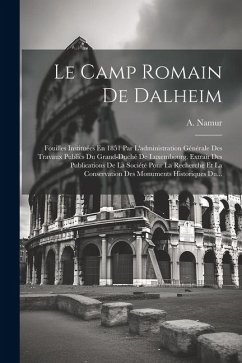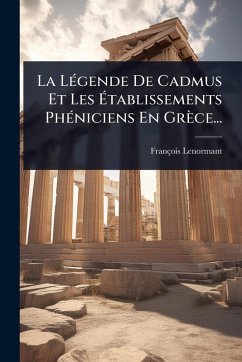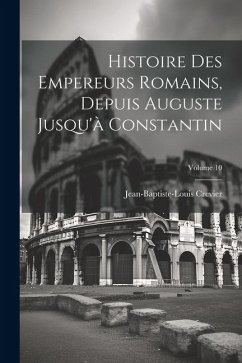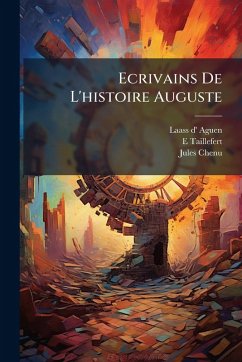
Le Camp Et Le Praetorium De La Iiie LÃ(c)gion Auguste A Lambèse...

PAYBACK Punkte
8 °P sammeln!
Le Camp Et Le Praetorium De La IIIe Légion Auguste A Lambèse... by René Cagnat offers a detailed exploration of the Roman military camp and praetorium of the Third Augustan Legion at Lambèse, in present-day Algeria. Written in French, this historical work provides insights into the layout, architecture, and daily life within a Roman legionary fortress. The book delves into the archaeological evidence uncovered at Lambèse, shedding light on the military strategies, social structures, and cultural practices of the Roman army in North Africa. Cagnat's study is a valuable resource for histori...
Le Camp Et Le Praetorium De La IIIe Légion Auguste A Lambèse... by René Cagnat offers a detailed exploration of the Roman military camp and praetorium of the Third Augustan Legion at Lambèse, in present-day Algeria. Written in French, this historical work provides insights into the layout, architecture, and daily life within a Roman legionary fortress. The book delves into the archaeological evidence uncovered at Lambèse, shedding light on the military strategies, social structures, and cultural practices of the Roman army in North Africa. Cagnat's study is a valuable resource for historians, archaeologists, and anyone interested in the Roman military presence in this region. This work has been selected by scholars as being culturally important, and is part of the knowledge base of civilization as we know it. This work was reproduced from the original artifact, and remains as true to the original work as possible. Therefore, you will see the original copyright references, library stamps (as most of these works have been housed in our most important libraries around the world), and other notations in the work. This work is in the public domain in the United States of America, and possibly other nations. Within the United States, you may freely copy and distribute this work, as no entity (individual or corporate) has a copyright on the body of the work. As a reproduction of a historical artifact, this work may contain missing or blurred pages, poor pictures, errant marks, etc. Scholars believe, and we concur, that this work is important enough to be preserved, reproduced, and made generally available to the public. We appreciate your support of the preservation process, and thank you for being an important part of keeping this knowledge alive and relevant.







![Essai Sur Les HiÃ(c)roglyphes Des Égyptiens [Extr. from the Divine Legation of Moses], Tr. [By M.a. LÃ(c)onard Des Malpeines]. Avec Des Remarques Sur La Chronologie & Sur La Première Écriture Des Chinois Cover Essai Sur Les HiÃ(c)roglyphes Des Égyptiens [Extr. from the Divine Legation of Moses], Tr. [By M.a. LÃ(c)onard Des Malpeines]. Avec Des Remarques Sur La Chronologie & Sur La Première Écriture Des Chinois](https://bilder.buecher.de/produkte/74/74731/74731234n.jpg)




